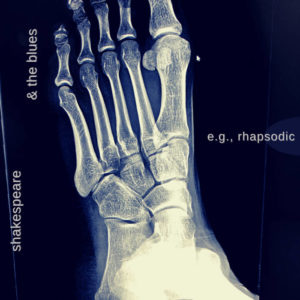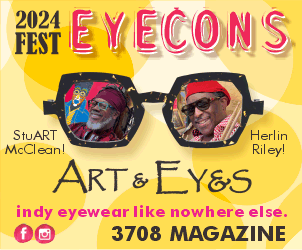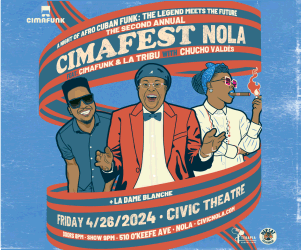 With the Tin Men, who bill themselves as “the world’s only guitar-sousaphone-washboard trio,” you can get a pretty good idea of what they sound like from that description alone.
With the Tin Men, who bill themselves as “the world’s only guitar-sousaphone-washboard trio,” you can get a pretty good idea of what they sound like from that description alone.
With Shakespeare & the Blues, very likely the world’s only electronics-enhanced bass-drums-concert-harp trio, you would have no idea.
And maybe that is the idea. Let’s turn to Zen master Rodney Dangerfield, who said, “I saw an ad in the paper, it said, ‘Improve your personality.’ So, I went to see the man, and he told me my personality was okay. But my name was my problem.” That’s not a random citation. It’s a passage from a Dangerfield routine, which not incidentally references Shakespeare, that is sampled in a couple of the tracks of this album. This and a few other spoken clips—from Lily Tomlin (absurdist domestic observations) and from Duke Ellington’s narration in his “A Drum Is a Woman” (an invitation to “the rhythm rhapsodic”)—address the psychology of identity, and in fittingly roundabout ways give a little perspective and purpose to this ethereal, ephemeral, evanescent excursion. It’s really cool. There is simply no name for it.
The parts that make up the Shakespeare & the Blues form a disparate krewe. Bassist Bryan Webre comes from Cajun extremists the Lost Bayou Ramblers. Drummer Cam Smith has a solid jazz grounding. And harpist Cassie Watson Francillon, in addition to having played with such distinctive acts as Helen Gillet and Tank & the Bangas, served as assistant producer for the New Orleans Jazz and Pop Harp Weekend. And yes, there is such a thing. You can look it up.
Throughout, the drums skitter, the bass goes rubbery-dubby and, most prominently, the harp lushly cascades. The latter provides some sonic consistency, but a series of needle drops (or the digital equivalent) would give some dramatically different impressions. And along the way there are electronic jabs here, washes of white noise there, stirring the mix.
The showpiece is the lengthy closer, “Star Rubies,” the Ellington passage serving as an invocation. The piece itself starts with almost a New Orleans street beat from Smith and Webre, but then launches into space, or spaces, vast and open, with Fancillon at the controls.
The improvisational, impressionistic vibe of it all gives it at least a jazz-y quality. And even if it isn’t really jazz per se, it is hard not to evoke the greats of harp-centric jazz: Dorothy Ashby (“The Jazz Harpist”) and—dare we say?—Alice Coltrane. But neither of them had Rodney Dangerfield on board.
—Steve Hochman




